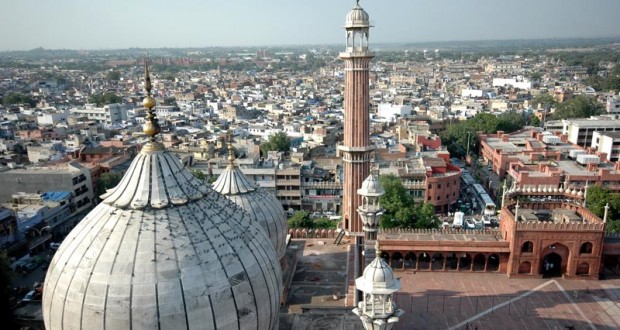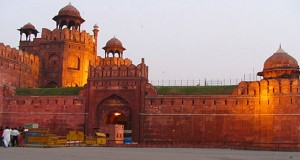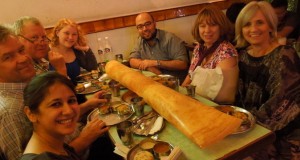Review Overview
Dolls Museum-Feroz Shah Kotla-Raj Ghat-Jama Masjid-Chandni Chowk- Red Fort Start around 3 pm with a cab or rickshaw over to the International Dolls Museum in Nehru House, Bahadur Shah Zafar Marg. It is located 2 km (I/3 miles) east of Connaught Circus, and is easy to find—being practically the only non-newspaper building in Delhi’s ‘Fleet Street’. Open 10 am to 6 pm daily except Monday, it features a beautiful collection of 6000 dolls from all over the world (85 different countries represented), plus the new display of dolls in traditional Indian costumes. Admission is Rsl.
Further up the same road (rickshaw ride, or hair-raising 15-minute walk), you’ll find Feroz Shah Kotla, the historic fifth city of Delhi, just outside Delhi Gate on the Mathura Road. Built in AD 1354 by Feroz Shah Tughlaq, most of the structure,including much of the original 9-m (30-ft) high wall, was knocked down to provide materials for the later city of Shahjahanabad, but what remains is nevertheless impressive. Worth seeing are the ruins of the old mosque, the Baoli (well) and the Wazir’s house (near northern wall). Best of all, there’s the striking monolithic Ashoka Pillar, a 13-m (42-ft) high sandstone column, inscribed with Ashokan edicts, which dates back to the 3rd century BC, brought here by Feroz Shah from Ambala. When the traveller Finch visited Delhi in 1601, the pillar was surmounted by a glittering globe and gilded crescent, but these were destroyed by lightning in 1715-19.
Leave Feroz Shah Kotla at the eastern end for Mahatma Gandhi Road. A 10-minute walk left brings you to Raj Ghat (appears on right), the simple, black marble platform commemorating the place of Mahatma Gandhi’s cremation. Set in green, tranquil gardens, it is a popular pilgrimage spot—especially on Friday evenings, when a special ceremony is held (Gandhi was assassinated on a Friday, 30 January 1948). Just opposite, and along to the left, is the small but interesting Gandhi Memorial Museum (open 9.30 am to 5.30 pm, except Monday). There’s a film show on Gandhi in English here every Sunday, commencing at 5 pm.
From the museum, it’s a short stroll left to Delhi Gate, then a fascinating 30-minute walk up Netaji Subhash Road (site of a remarkable pavement bazaar) to the Jama Masjid. This is India’s largest mosque, approached via a grassy maidan. The massive red sandstone structure—only rivalled by the similar mosque at Fatehpur Sikri—was initiated by Shah Jahan (his final extravagance) in 1644 and completed by Aurangzeb in 1658. The Jama Masjid has three great gateways, entrance usually being via the grand flight of stairs at the Eastern Gate. Women not accompanied by a ‘responsible male relative’ are instantly ejected. Inside the massive cloistered courtyard (it holds up to 20 000 worshippers on important festivals), fend off enterprising nobodies trying to sell you (unnecessary) Rsl camera tickets, and head for the small booth left of the entrance to buy a (necessary) Rs2 ‘Meenar Ticket’.
This gains you access to the 46-m (150-ft) South Minaret, which provides superlative views of the Red Fort and old city. This is one of two minaret here—both built of strips of red sandstone and white marble—which flank the imposing 61-m (200-ft) high central dome. On your way up the narrow 122-step staircase to the top, firmly discourage so-called guides. All they’ll do is wander up there with you, follow you back down, and demand Rs20 for doing precisely nothing. The best day to visit the Jama Masjid is Friday (Muslim holy day), or during the annual festival of Ramadan.
Leaving the mosque by the Northern Gate, you’ll soon enter the crowded ‘moonlit crossroads’ of Chandni Chowk. Constructed in 1648, this 21-m (68-ft) wide road was once the richest street of India and the most famous bazaar in the East. Today, it is a crowded, frantic shopping-centre—full of covered arcades, tiny roadside temples, lucky palaces, suiting and shirting shops and novelty stores—with a quite electric atmosphere. For minimal shell-shock, do a short reconnaissance by rickshaw before getting swallowed up in the crowds. Ask to be put off near the excellent gold and silver jewellery market at the red sandstone Fountain (the big landmark), then either wander down one of the numerous backstreets (lots of little curio shops, get pleasantly lost for hours) or visit the Digambar Jain Mandir (1656) at the top of the chowk, near Red Fort. This elegant Jain temple has a charming marble courtyard and a profusion of paintings and gilded carvings in its interior, but most visitors :ross the road is the mighty red-sandstone Red Fort (Lal Qua), overlooking the river Yamuna.
This was built by Shah Jahan (1638-48) as his personal royal residence wi th in his new capital of Shahjahanabad. Deposed by his son Aurangzeb, he hardly ever used it, but left behind one of the most magnificent of all Indian royal palaces. battlements alone are 2.4 km (11/2 miles) long and (at certain points) 18.5 m (60 high . There are two massive gates: Delhi Gate to the south, Lahore Gate to the Went. Visitors’ entrance is via the Lahore Gate (admission Rs0.50, free on Fridays), wh ich leads directly into the vaulted shopping arcade of Chhatta Chowk. Once the ince of quality court jewellers and weavers, it is now full of tourist shops. Run gauntlet to emerge at the 2-storeyed palace entrance gate, the Naubat Khana. It opens out into pleasant gardens—look out for bullocks mowing the lawn—and the public audience hall of Diwan-i-Am, where the Emperor heard commoners’ complaints from a 3-m (10-ft) high marble recess, fronted by a huge shamiana decorated with pearls, jewels and golden embroidered work. All this finery, together with the beautiful bird, flower and fruit mosaics of the Emperor’s Seat itself, was picked out looted in the aftermath of the 1857 Mutiny.
Beyond is an open courtyard with serene, green gardens and six palace mammals. To far right is Mumtaz Mahal, now a small museum (open 9 am to 5 pm, except riday), and next to it the Rang Mahal (Painted Palace), which once had a rich silver riling ornamented with golden flowers, later melted down to augment the royal offers. The lotus-shaped marble tank here was the starting-point of the ‘Stream of paradise’ (Nahr-i-Bashisht) which ran through the centre of the mahals and kept hem cool. Moving left, there are three connecting marble apartments, where the Emperor used to pray, sleep and live, known as the Khas Mahal. But it’s the adjoining Diwan-i-Khas (private audience hall) that was the centrepiece of the complex. A magnificent marble pavilion supported by 32 richly carved pillars, inlaid with precious gems, it was stripped of its magnificence (including the solid-silver ceiling) by Jat looters in 1779.
Some time earlier (1739), it had lost its greatest treasure, the priceless Peacock Throne to the Persian invader Nadir Shah. A fabulous work of art, the throne was made of solid gold and constructed in the shape of two dancing fantailed peacocks. Their eyes were studded with rubies and diamonds, and between their tailspreads stood a parakeet carved from a single huge emerald. Clusters of diamonds were set into the throne’s legs, and on either side of it were two human figures made of gold, pearls and precious stones. The Diwan-i-Khas has just one ‘treasure’ left—the famous (though as it turned out, premature) sentiment of Shah Jahan: ‘If on earth there be a paradise of bliss, it is this, it is this, it is this.’ You’ll find it inscribed in gold Persian lettering, over an arch in the central hall.
Next door are the three Royal Baths (Hammams), where the emperor and favoured guests took hot saunas round perfumed fountains, fed by the marble ‘stream of paradise’. Pause here to look over the fort wall towards the Yamaha . There’s normally some sort of entertainment taking place for the benefit of tourists—rope-climbers, magicians, fakirs, contortionists.
From the mahals, cross over to the charming Moti Masjid (Pearl Mosque), constructed by Aurangzeb (1622) for private worship. It’s a little gem. The original gilded copper domes vanished during the Mutiny, but the present marble ones are a good substitute and it’s a small-scale masterpiece throughout, right down to the small, handsome entrance gate of worked brass By now, if you’ve timed things right, it should be early evening and time for the excellent Sound and Light Show at the Red Fort. Timings vary according to the season so check at the tourist office. It’s worth spending out on a Rs8 luxury seat. The cheaper Rs4 ‘garden seats’ seem to attract all the mosquitoes. The show runs for an hour, and you’re expected to stand up at the end for a stirring anthem.





